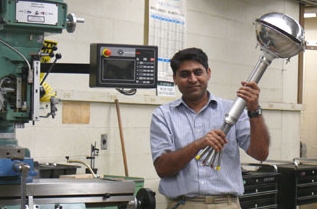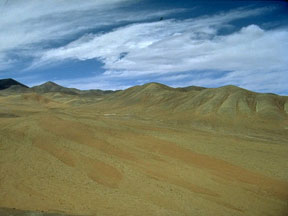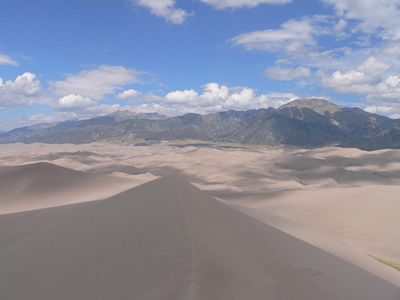
Image courtesy of Steven Domonkos, University of Washington | ||||
| ||||
You might also be interested in:

Traveling Nitrogen Classroom Activity Kit
Check out our online store - minerals, fossils, books, activities, jewelry, and household items!...more
Fisheries in the Southeast Pacific Region
If you like anchovies on your pizza, there is a good chance that the little fish now swimming in tomato sauce was once swimming in the water of the Southeastern Pacific (SEP) Ocean. The deep, cold, and...more
Atacama Desert
Chile's Atacama Desert is one of the driest places on Earth. Much of the desert receives less than 1 millimeter (0.04 inch) of rainfall per year on average, making it 50 times more arid than California's...more
Extreme Environments - Temperature and Moisture
This page describes environments that are very hot or very cold, extremely dry, or both. Extreme environments are places that are inhospitable to most "normal" living creatures. Extreme environments are...more
Finding Water in the Sky
The Atacama Desert is one of the driest place on Earth. Water is scarce and there are even areas where no rain has ever been recorded. The lack of water makes life hard in the Atacama, yet more than a...more
What is VOCALS?
What if you wanted to learn more about the climate system of a very large area such as the Southeast Pacific Ocean? What would be involved in studying how the oceans, land, and atmosphere interact? You...more
Stratocumulus
Stratocumulus (weather symbol - Sc) clouds consist of water droplets and belong to the Low Cloud (surface-2000m) group. These clouds are low, lumpy, and gray. These clouds can look like cells under a microscope...more
How Clouds Form
A cloud is composed of tiny water droplets or ice crystals that are suspended in the air. A series of processes have to happen in order for these water droplets or ice crystals to form into clouds in the...morePlease log in
Science Blogs
Real Climate: climate science from climate scientists

Windows to the Universe, a project of the National Earth Science Teachers Association, is sponsored in part is sponsored in part through grants from federal agencies (NASA and NOAA), and partnerships with affiliated organizations, including the American Geophysical Union, the Howard Hughes Medical Institute, the Earth System Information Partnership, the American Meteorological Society, the National Center for Science Education, and TERC. The American Geophysical Union and the American Geosciences Institute are Windows to the Universe Founding Partners. NESTA welcomes new Institutional Affiliates in support of our ongoing programs, as well as collaborations on new projects. Contact NESTA for more information.




